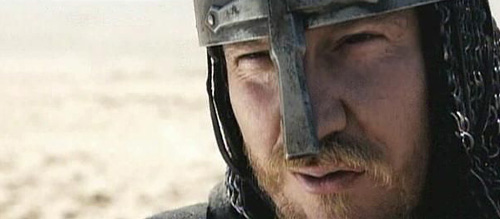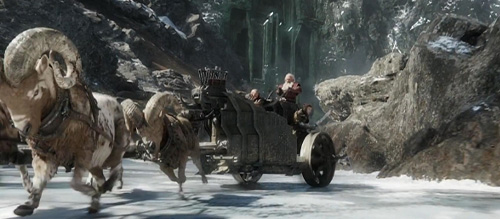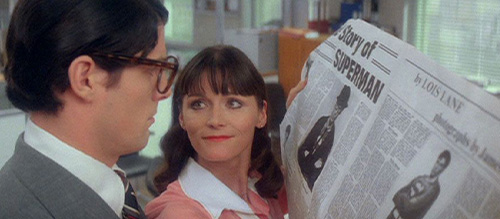A Brief History of the Director’s Cut
For at least half of the medium’s existence, there has existed the concept of the director being a film’s sole author. With the emergence of Auteur Theory (Andrew Sarris building on French critics’ ideas in 1962) this idea continued to gain traction in the minds of audiences and critics alike. But the director’s word is not always law. The version of a film released to the public has passed through many hands, is evidence of an almighty collaborative effort and is the result of many hundreds of hours in the edit. Film directors nearly always have to make compromises along the way, cutting small but significant moments or entire subplots from their movies to make them work.
Nightmarish tales of perfectionist, visionary directors getting locked out of the editing suite by philistine Hollywood executives only concerned about their bottom line (Orson Welles on Touch of Evil, Orson Welles on The Magnificent Ambersons, Michael Cimino on Heaven’s Gate) have become folkloric. A film, especially a director’s passion project, might be seen as too obtuse, too indulgent and/or too weird, and unless said director has final cut written into their contract (which isn’t going to happen if they’re not “a name” in the industry) executives can always find someone else to do a hard edit. However, outside theatrical release windows and with the rise of home media there came a new outlet for directors to not only show their preferred cut to audiences, but for studios to tap into another lucrative revenue stream in the form of shiny new box sets.
A good director’s cut isnt just made up of footage retrieved from the cutting room floor pasted back in (more often than not this was cut for a good reason), but it should coalesce into a distinct artistic vision. Ridley Scott, an advocate for and a frequent maker of director’s cuts over his long and prolific career, tends to describe them in his DVD/Blu-ray introductions as his “preferred version”. Directors such as Cimino and James Cameron have blamed studio pressure and interference from executives for not meeting their original vision and have subsequently released director’s cuts seemingly to correct this. The Abyss, Aliens, Terminator 2 and Avatar all received this treatment for their home release, though these cuts usually amount to only a few extended scenes and give Cameron an excuse to enhance the existing footage with the latest technology.
Ridley Scott could be a case study on his own – when handled correctly and with a clear storytelling purpose in mind, the director’s cut can be an art form in itself. Blade Runner is now on its fifth or eighth version (depending on how you count them), and the “Final Cut” released in 2007 is supposedly just that. Scott has gone back and forth on the main discrepancy and key character question of the story – whether Deckard is a replicant or not – over the years, and various iterations of the film which are all in one cut or another were further contradicted by Blade Runner 2049. Elsewhere Scott has presented a Director’s/Extended Cut of Gladiator (more scenes, none especially essential), Black Hawk Down (ditto) and Kingdom of Heaven. The Director’s Cut of Kingdom of Heaven should be what all other director’s cuts are compared against, being an entirely different and far superior film that not only deepens characterisation and re-incorporates several affecting subplots, but which also fascinatingly incorporates divine intervention into an otherwise grounded historical epic.
Francis Ford Coppola famously re-cut Apocalypse Now twice with decades between each version. The “Redux” added a whopping 49 minutes while the “Final Cut”, only released in 2019, gathered Captain Willard’s journey through hell back to a tight (yeah, right…) 3 hours. Classics like Apocalypse Now are always worth revisiting and seeing them from any new angle that can potentially further enlightenment.
A quite different take on the director’s cut is Peter Jackson and his infamous Middle Earth Extended Editions. New Line Cinema and latterly Warner Brothers put a whole lot of extra time, effort and money into Jackson’s quest to seamlessly incorporate new scenes (complete with added action and special effects) into the already hefty fantasy epics, and packaged them with hours and hours of special features. Were these even really director’s cuts (again, they were Jackson’s preferred versions) or simply very effective marketing exercises that convinced fans to buy each film at least twice? The jury’s out. But, while the extended Lord of the Rings gave us some welcome character expansion for Aragorn, Eowyn and Faramir, not to mention giving Saruman – so cruelly cut out of the theatrical release – a great death scene, no new scene added to The Hobbit was strictly necessary.
The director’s cut will always be a marketing strategy to a certain extent, an opportunity to re-promote and resell your product. This isn’t necessarily a bad thing (though was anyone really asking for a director’s cut of Daredevil?) and it’s a strategy more recently adopted by directors in the horror genre. The release of Mike Flanagan’s director’s cut of Doctor Sleep will be upon us soon and already out is the Midsommar Director’s Cut. Adding 25 minutes to an already lengthy genre picture might seem like overkill, but director Ari Aster uses the time well, to seed the most important ideas much earlier in the narrative, let the uneasy atmosphere really seep in, and deepen the biggest character moments. It’s a different and rewarding alternative viewing experience of Midsommar, as good as the original cut was.
Yet another way of looking at the concept is the “fantasy cut”. Richard Donner was unceremoniously fired from Superman II midway through production, and a large portion of his footage was re-shot by incoming replacement director Richard Lester. We’ll never truly see Donner’s original vision because it doesn’t exist, but fans and colleagues of Donner came together to help create a close approximation from outtakes for home video release in 2006, and the resultant film was not only different but arguably more thematically satisfying if understandably not as polished as the original Superman II. It may use Christopher Reeve and Margot Kidder’s chemistry scenes from the audition process, but it also gives Lois enough credit to work out who Superman really is all by herself because she’s, ya’know, a journalist.
The Holy Grail of director’s cuts is of course the elusive (because it doesn’t exist – yet) Snyder Cut of Justice League. I’m not saying unseen footage doesn’t exist, or that Zack Snyder’s original plans for the lacklustre film were not very different from the theatrically released version, but a so-called director’s cut would have required at least as much of an investment as the Middle Earth Extended Editions to complete, and surely Warner Bros’ marketing team would have gone into overdrive by now if it was ever going to be released?
The director’s cut has been many things over the decades – cynical marketing, a treat for super-fans and a way for creatively stifled filmmakers to release something truly special. You of course have to consider that auteurs can be a difficult bunch of perfectionists and that sooner or later a cut of their film in some shape or form has to see the light of day, but if you’re paying for that named director, you want to see that director’s signature in the final product. A director’s cut is a compromise, an opportunity for a filmmaker to exhibit their work unadulterated and for a studio to boost profit margins. There have been good director’s cuts, there have been bad director’s cuts, there have been pointless director’s cuts, but when said cuts are treated with care and respect they can be an enlightening new view of any film worth talking about.





